Modified procedure addresses neglected midfoot
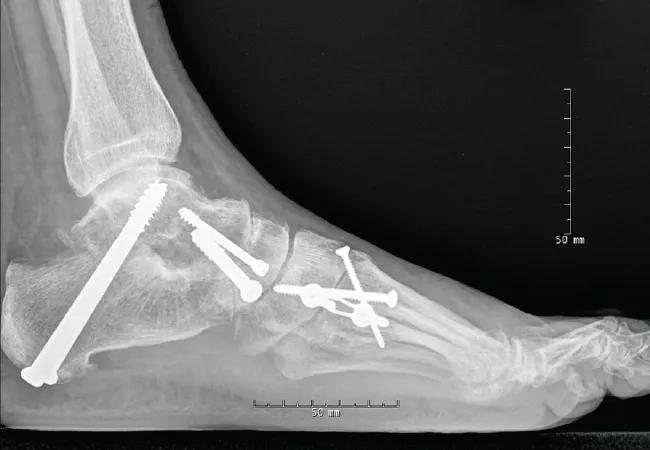
Cleveland Clinic is a non-profit academic medical center. Advertising on our site helps support our mission. We do not endorse non-Cleveland Clinic products or services. Policy
The severe adult-acquired flatfoot, often accompanied by profound deformity, stiffness, arthritic change and debilitating pain, remains a challenging clinical problem. Triple arthrodesis has been the gold standard surgical treatment for this condition for decades. “Triple” arthrodesis earned its name because it involves fusing the three joints of the hindfoot — the calcaneocuboid, subtalar and talonavicular — to correct the deformity.
While triple fusion remains a commonly performed procedure for severe flatfoot, it is not without risk. Each of the three joints has the potential for not healing or healing in the wrong position. Additionally, all hindfoot motion is sacrificed to achieve the desired correction and stability. Lastly, traditional triple arthrodesis does not address deformity or instability in the midfoot, which often accompanies a longstanding severe flatfoot.
To address these problems, Cleveland Clinic foot and ankle specialists have employed a new triple arthrodesis surgery for severe flatfoot for the past five years. The new procedure involves fusion of only the subtalar and talonavicular joints in the hindfoot combined with fusion of the first tarsometatarsal joint in the midfoot.
The impetus for initiating this modified surgical approach for the severe flatfoot was the observation of all-too-common concomitant instability and deformity of the midfoot that was not being addressed by the standard procedure. Failure to manage the involved midfoot produces a nonplantigrade foot: The medial column remains elevated, the forefoot is supinated and pressure is focused on the lateral side of the foot. The weight-bearing tripod of the foot, involving the first and fifth metatarsal heads and the heel, remains incompetent. If the tripod is not restored — even if the corrected joints heal appropriately — the foot will not function optimally.
Our observation that even severe deformities were adequately corrected by fusing only the subtalar and talonavicular joints also led us to question the traditional “triple” approach. This was not terribly surprising as it is these joints that are most commonly and most severely subluxated in the adult flatfoot. Sparing of the calcaneocuboid joint saves surgical time, avoids the potential for a nonunion and also preserves a small degree of motion in the lateral column, which can improve the foot’s ability to accommodate uneven ground. We emphasize that the calcaneocuboid joint should be evaluated on a case-by-case basis; if severe arthritic change is detected on preoperative imaging studies, the calcaneocuboid joint should be included in the fusion.
The primary indication for this modified triple arthrodesis is the presence of a severe, stiff, arthritic flatfoot with demonstrable instability or arthritis of the first tarsometatarsal joint. Instability of the first tarsometatarsal is demonstrated on physical exam using a “piano key” maneuver to stress the first ray dorsally and plantarly while stabilizing the rest of the metatarsals. The examiner should look for asymmetry when compared with the other side and/or absolute dorsiflexion of the first ray beyond the level of the second metatarsal head. Static deformity is present when the forefoot remains supinated despite correction of the heel. Radiographic evidence of first tarsometatarsal instability includes plantar gapping of the joint on a weight-bearing lateral radiograph (Figure 1). Additional radiographic findings may include hallux valgus, arthritic change of the first tarsometatarsal and second metatarsophalangeal joint subluxation.
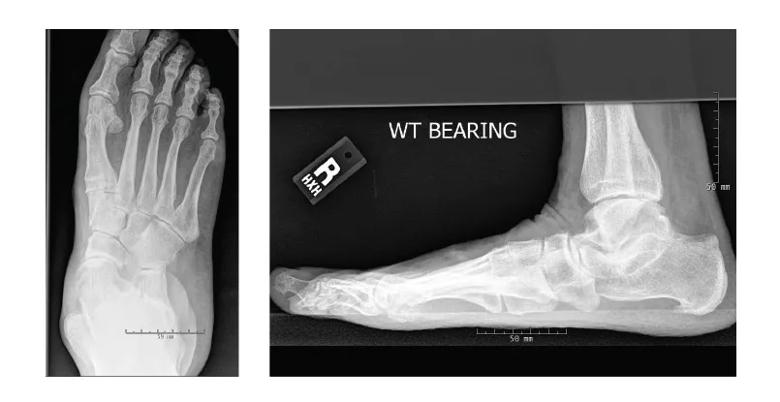
Figures 1 (left) and lateral (right) radiographs of a 79-year-old female with severe flatfoot deformity. Note the plantar gapping present at the first tarsometatarsal joint on the lateral view (B).
The surgical technique for the modified triple arthrodesis begins like a traditional hindfoot fusion with denuding and preparation of the subtalar and talonavicular joints via lateral and medial incisions, respectively. If plain radiographs do not demonstrate arthritis of the calcaneocuboid joint, it is generally not explored. A third incision is made dorsomedially to expose and prepare the first tarsometatarsal. Reduction proceeds from proximal to distal, beginning with the subtalar joint, then the talonavicular joint and finally the first tarsometatarsal. The critical technical point is to position the first tarsometatarsal on a plane level with the fifth metatarsal head and the heel, thus restoring the weight-bearing tripod of the foot. Bone grafting and internal fixation for each joint are performed in standard fashion.
Over the past five years, 34 patients have undergone this modified triple surgery for the correction of a severe flatfoot. This cohort is being formally evaluated for patient satisfaction and functional outcome, and we hope to publish results of this study in the near future. To date, no patient has developed a nonunion and both radiographic and clinical correction has been significant (Figures 2A, 2B).

Figures 2. Postoperative AP and lateral radiographs demonstrate correction of all components of flatfoot deformity with modified triple arthrodesis.
Although the traditional hindfoot triple fusion will remain a part of the surgeon’s arsenal for treating the severe flatfoot, the “modified triple arthrodesis” discussed above addresses the often neglected midfoot, saves surgical time, spares a degree of lateral column motion and facilitates restoration of the tripod of the foot. For these reasons, it deserves further dedicated study to determine its ideal role in the surgical treatment of the severe flatfoot.
Dr. Berkowitz is an orthopaedic surgeon who specializes in lower extremity trauma and all conditions of the foot and ankle, including arthritis, tendon and ligament problems.
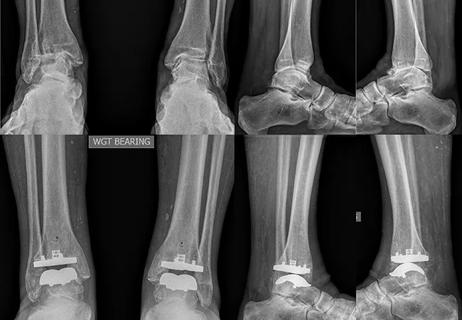
Arthrodesis is not the only surgical option
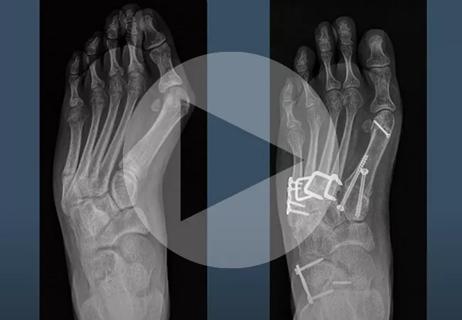
Surgeon corrects skew foot to address repeat injuries

Pain, quality of life and other patient-reported data are significantly improved one year after surgery

Many amputations can be prevented

Ankle arthritis can be more disabling than hip or knee arthritis
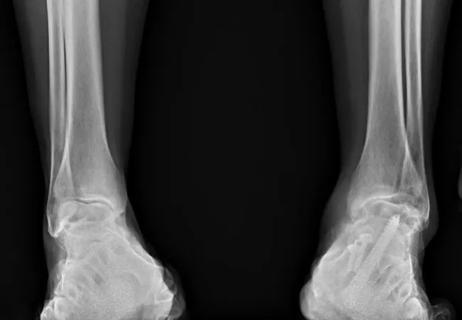
Staged cavus repair and total ankle arthroplasty
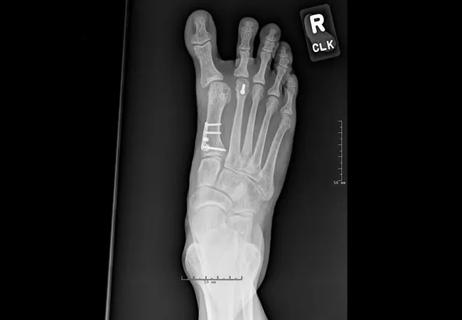
Causes are multifactorial, but good surgical decision-making and technique reduce failures
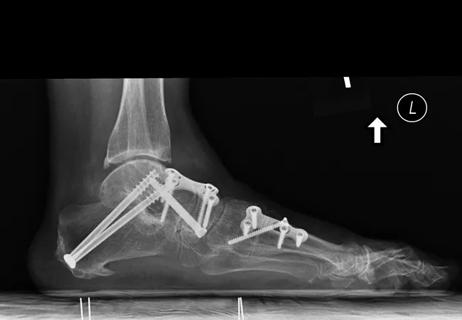
Valgus tibiotalar tilt tough to treat, common